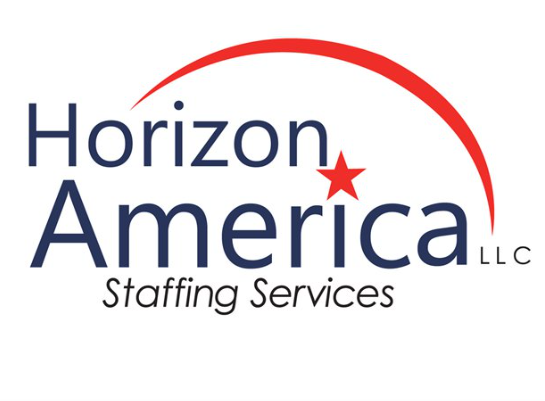Effective workforce scheduling in your warehouse isn’t just an administrative task—it’s a critical driver of operational efficiency and profitability. Consider this: when a high-volume shipping day is staffed with only half the required personnel while the following slow day has double the necessary workers, both productivity and labor costs suffer significantly. This is why precision in scheduling must be a top priority for warehouse management.
Poor scheduling—the misalignment of labor resources with actual operational needs—can lead to costly mistakes, reduced throughput, and employee dissatisfaction. By mastering workforce management, you can optimize work schedules to match demand patterns, ultimately enhancing productivity and controlling costs.
The Cost of Poor Scheduling Practices
Good employee scheduling is vital to keep your business running like a well-oiled machine, especially on the production floor. Everything has to be timed correctly so no energy is wasted and your company maximizes efficiency. If you’re scheduling employees without fully considering its impacts, you need to change your methods. Here’s how poor scheduling affects the organization:
1. Subpar Performance
Poor scheduling affects your business’s productivity and overall performance. When employees don’t get enough breaks or are overworked, they become less efficient. Production times and deadlines can be delayed, causing you to lose profit and client trust.
Furthermore, stress and exhaustion can lead to bad decisions, mistakes, or even accidents. Meanwhile, overtime isn’t always the best choice—studies show that productivity declines after an employee hits 50 hours of work in a week.¹
2. Risk of Employee Turnover
Scheduling problems can lead to retention issues. When workers become overworked, they tend to look for better opportunities elsewhere.
This not only affects your production but can also cost the company. Additionally, high turnover rates can lead to a negative perception of your business. While scheduling doesn’t directly impact reputation, poor practices can lead to it.
3. Low Employee Morale
Overworked employees are the first to experience a decrease in morale. Soon, however, the issue may spread throughout the business as turnover and fatigue become more apparent.
While some workers are eager to work overtime, it will eventually take a toll on their bodies and minds. This affects their productivity and can cause others to lose morale as well. The cycle continues if turnover rates increase—your remaining team members will need shoulder increased pick quotas and extended shift coverage until replacement associates complete onboarding and reach standard productivity levels.
Read more: The Science of Employee Well-Being: How to Promote Longevity and Satisfaction in the Workplace
4. Poor Customer Service
Your team members are the first ones to interact with clients and customers. When workers are overworked and frustrated, they’re more likely to be impatient and make mistakes. This can affect client and customer relations, causing you to lose your reputation in the market or potentially lose clients.
5. Inefficient Operations
Poor scheduling creates a dual problem: some employees become overworked while others don’t have enough to do. This imbalance leads to tension when certain team members are constantly working overtime while others are requesting additional tasks to fill their time.
As responsibilities get shifted between workers, information and process ownership become fragmented. This handoff approach causes miscommunication and workflow inefficiencies.
A lack of clear scheduling and expectations can lead to costly mistakes—and sometimes safety hazards.
Read more: Critical Safety Training Every Temporary Industrial Worker Needs on Day One
6. More Costs
As you maintain cohesion in the business, you’ll likely resort to hiring more employees to fill open shifts. While attrition and hiring are natural processes in any organization, it becomes costly if you have high turnover rates.
Replacing workers can cost one to two times an employee’s yearly salary—and more for higher positions and management roles. This will only ramp up the costs but not fully address scheduling challenges.
Additionally, under the FLSA, overtime pay must be not less than 1.5 times the employee’s regular rate—and that adds up!²
So, what can you do to improve your scheduling strategy?
7 Effective Scheduling Practices
Aside from adhering to labor laws, intentional staff scheduling is a strategic approach to avoid costly scheduling mistakes. Here’s how you can improve employee work schedules:
1. Identify and anticipate demand.
Demand is one of the main reasons that employers ask for additional work, often leading to poor employee scheduling. Instead of simply reacting to increased demand, be on top of the game by forecasting future metrics.
This involves predicting the volume of work every month. Historical data can help you anticipate lean and peak seasons, allowing you to prepare your workforce. You can also use sales forecasts and market trends.
- Do you expect a strong product to increase demand?
- Are there any market shifts that might affect demand?
Understanding how demand fluctuates allows you to adjust your staffing needs. This helps ensure that you have more workers during busy periods and just enough staff during slow seasons.
2. Establish clear workforce requirements.
What exactly do you need to keep your operations optimal?
This includes the skills, capacity, expertise, and the number of your workforce. Identifying what fits within your operation is key to avoiding unnecessary costs. This can also give you desirable employee schedules, since no one has to work extra shifts to cover for their coworkers.
To make your workforce more resilient, it can be beneficial to maintain a contingent workforce in case an employee needs to take a leave or an unexpected situation occurs.
3. Offer flexible scheduling and part-time options.
Work flexibility is a vital component of employee satisfaction. It allows them to have more autonomy and freedom to adjust their work. Here’s what you can offer:
- Flexible hours – clock in and out an hour before or after the shift. This allows workers to have more flexibility over their work, especially those who have long commutes.
- Shift swapping – an option to break 8-hour shifts into two 4-hour shifts.
- Compressed workweek – 10-hour 4-day work shifts instead of usual 8-hour 5-days. This can reduce commute time and increase rest days.
- Voluntary overtime – making overtime optional can help rotate overtime opportunities among all staff.
- Part-time work – temporary work allows workers to have more flexibility. It’s best to offer during off-peak seasons.
4. Monitor employee performance and scheduling efficiency.
Monitoring employee performance is crucial. This can provide you with valuable insights into what time of the day they work best or how much workload they can handle without getting fatigued.
You can use key performance indicators like labor costs, productivity and efficiency, product quantity and quality, and overall satisfaction. By monitoring employee performance, employers can make better decisions on how to manage work schedules.
5. Leverage employee scheduling software and automation tools.
Manual scheduling can take a lot of time. Instead, you can use scheduling software to make the employee scheduling process more efficient.
You can use an automated scheduling system, especially for recurring shifts. Employees only need to submit their availability using an app, and the app will do the rest. Furthermore, you can use these apps to determine employee availability. This reduces the need to chase after workers who may not have the extra time.
You can also track employee shifts to see who hasn’t taken extra shifts. This reduces overworking and allows other workers to take advantage of having extra shifts. Here are a few scheduling apps you can use:
- When I Work
- Deputy
- Homebase
- Sling
- ZoomShift
6. Communicate work schedules clearly and early.
To avoid scheduling issues, employers must share the work schedule with every employee ahead of time.
For shifting changes, maintain a consistent rotation schedule for a minimum of 2 to 4 weeks. This will help reduce workplace confusion and prevent no-shows on shifts. It also allows employees to plan their personal lives better, which can improve morale and work-life balance.
Read more: Reducing Absenteeism with Temporary Staffing Solutions: A Guide for Industrial Employers
7. Involve employees in shift planning.
Human resources should involve employees in the process. While you may not be able to accommodate every request, gathering employee feedback can help build trust. It shows that you care about their well-being. Additionally, it will give employees an avenue to let you know whether current processes are working or not.
Lastly, it provides a better approach to time tracking. Since employees can share their preferences, it’s easier to align expectations among employees. This helps prevent last-minute changes, allowing for smoother scheduling and fewer disruptions.
Related article: Building Trust Through Transparency: How Open Recruiting Practices Enhance Employer-Employee Relationships
Improve workforce management with Horizon America.
Finding qualified workers is already a challenging task. When you’re experiencing high turnover, shifting seasons, and staffing concerns, you need a reliable partner.
Horizon America offers access to a ready pool of qualified and talented staff in manufacturing and light industrial fields. Whether you need permanent, temporary, or temp-to-hire candidates, we can help you manage your teams.
We’re just a call away. Contact us today.
References
- Solutions, Circadian® 24/7 Workforce. “Excessive Overtime: Understanding Its Impact on Your Workforce and Business.” 24/7 Global Workforce Solutions | CIRCADIAN® Technologies, 22 Mar. 2025, circadian.com/blog/excessive-overtime.
- “Overtime Pay.” DOL, www.dol.gov/general/topic/wages/overtimepay.






